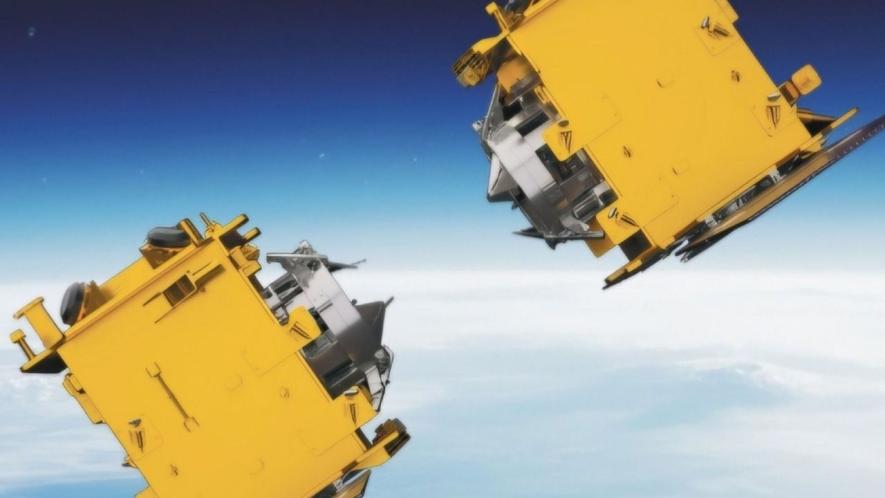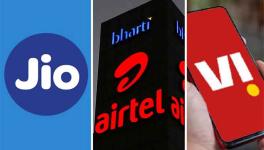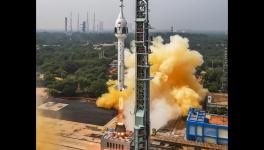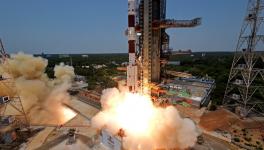Indian Space Sector on a High This Year

Space docking systems
India is having an excellent first month of 2025 as regards space ventures, not only by the traditional state-sector but also by the nascent but growing private sector in space technology.
NVS-02 NavIC Satellite
On January 29, 2025 ISRO (Indian Space Research Organisation) successfully placed its NVS-02 satellite in geo-stationery transfer orbit (GTO) of around 36,500 km above Earth in its GSLV F15 mission from the Satish Dhawan Space Centre, Sriharikota, aboard its larger GSLV (geo-synchronous launch vehicle) rocket.
This is a celebratory occasion for ISRO for many reasons.
It was not merely the 100th launch from Sriharikota, but was also a quiet triumph for the GSLV Mk2 launch vehicle which has really troubled ISRO with a high failure rate of six out of 16 previous launches. This was the seventh launch of the GSLV with the indigenous cryogenic 3rd stage, another success story after a long and arduous journey since 1990 to self-reliance.
ISRO was initially set to receive transfer of technology for cryogenic engines from the erstwhile Soviet Union, which later withdrew from the agreement under technology denial pressure from the US for supposed violation of the US-imposed Missile Technology Control Regime (MTCR), forcing ISRO to develop the technology on its own over the next two decades. The GSLV Mk 2 can place 5,000kg payloads in low-earth orbit or around 2,500kg in GTO.
NVS-02 is the second in this series of second-generation satellites augmenting the indigenous NavIC (navigation with Indian constellation) satellite navigation system with an earlier constellation of eight satellites in orbit since 2018. NavIC seeks to provide standard positioning services (SPS) over India and up to 1,500km around it for defence applications (encrypted special services), aerial and terrestrial navigation, tracking of surface vehicular fleets, agriculture, remote sensing, mobile phones, IoT (internet of things) and so on.
NVS-02 also has an Indian atomic clock, along with an imported one, to move toward full autonomy of vital time signals. Several mobile phones sold in India already have NavIC-compatible chipsets and it is planned to soon move completely away from the US-controlled GPS to NavIC-based positioning systems.
Space Docking Systems
Besides the above success, the recent most significant technological advance has undoubtedly been the development and testing of space vehicle docking capability by ISRO. The agency launched its SPADEX (Space Docking Experiment) mission on December 30, 2024, on board its workhorse PSLV (polar satellite launch vehicle) rocket after a few postponements to allow for more preparatory steps. The idea was to send two non-crewed spacecraft into orbit and get them to dock with and separate from each other, thus testing and demonstrating this crucial capability along with various other systems required before scaling up to larger operational craft.
Docking is required when two space vehicles, or two or more parts of a large spacecraft like a space station which cannot be launched in one go due to its size, are required to join together in space. The space station, for instance, cannot be launched in a single piece and comprises several parts that must be assembled in space. These sub-assemblies are launched separately into the same orbit and docked or joined together in space, while in orbit. When supplies are required in the space station, or when replacement crews are to be flown to it, again the craft ferrying supplies or crew is launched separately and docks with the mother craft.
The same applies in missions to the Moon or other bodies. The mother craft orbiting the Moon or other body releases a robotic or crewed craft or lander which descends to the surface, and must later return to the orbiting craft with crew or samples, dock with the mother craft and return to Earth. The docking must not only enable joining of two or more craft, but must also enable seamless power, navigation and control, communications, life support systems, and transfer of crew of objects or crew.
Since India has now embarked on phase-wise lunar missions and missions to Mars and later Venus, plans to launch and operate its own space station, and also intends to commence crewed space missions, mastery over docking systems and capabilities is vital. SPADEX was the first operational step in that direction, whatever simulations may have been conducted on ground earlier.
In the SPADEX mission, ISRO launched two satellites of about 250kg each named SDX01 as chaser and SDX02 as the target to a circular orbit of about 470 km above earth, but separated from each other by about 20km. Using small propulsion systems on the target craft, this distance was gradually reduced in stages to 5km, 2.5km, 500metres, 225m, 15m and 3m from where the final docking maneuvers commenced. The docking maneuvers were postponed at a certain stage because the two craft had drifted apart, requiring recalibration of the relative speeds. Laser Range Finders were used at distances between 5km and 250 metres, a Docking Camera for distances of 300m to 1m, and a Visual Camera for the final maneuver 1 metre onward to docking.
This sounds easy, like some simple video game. But readers should keep in mind two important factors. The two craft are orbiting the earth at speeds of around 28,800 mph, while the docking maneuver must be carried out at relative velocities, that is, difference in speed between the chaser and the target of 0.036kmph or about 10mm/s (millimeters per second)!
Further, in the ISRO mission, the two craft weighed only 220kg, the low weight making control more difficult since the chances of drift in space is higher. It may be noted that when the erstwhile Soviet Union conducted its first automated docking maneuver test in 1967, the weight of each craft was 1,400kg each.
Craft size has relative merits and demerits with respect to docking. Larger craft have more fuel and enable multiple firings of motors to control docking maneuvers, however, the larger momentum may contribute to larger changes in direction and speed making docking more difficult.
Smaller craft like ISRO’s are prone to space drift and require more precise maneuvers, but are aided by highly improved sensors, controls and rocket motors currently available. It should be added that smaller craft are more likely to be used for robotic sample return missions to the Moon.
The docking is achieved when the petals of the docking systems of the two craft, nowadays made to the same international standards to enable inter-operability, lock with each other. ISRO’s craft had androgynous systems, meaning that either craft could act as chaser or target.
Once docking was achieved, the two interlocked were rigidised or locked in place, joint controls and communications and other systems were successfully tested.
Going forward, ISRO would have to scale up the systems and test it under different conditions in simulations, on the ground and subsequently in future launches. SPADEX has been a significant achievement by ISRO and is a major step forward for future robotic and crewed missions.
Indian Private Sector Payloads Aboard SpaceX
Meanwhile, three payloads by private-sector Indian start-ups were successfully placed in their designated orbits on board an Elon Musk Space X Falcon 9 Transporter-12 rideshare mission launched on January 14, 2025, from Vandenburg Space Force Base in California, US.
Bangalore-based Pixxel launched three of a planned six hyper-spectral imaging satellites providing commercial services through its Firefly constellation. The satellites would provide high precision, high-resolution images for earth observation and climate data at 5 metres resolution or six times better than the currently available 30m resolution, claimed to be the world’s best so far. Hyper-spectral imaging captures spatial, temporal and spectral data and presents them in a “data cube” comprising image layers of different wavelengths.
Digantara launched its world’s-first commercial SCOT (Space Camera for Object Tracking) Space Situational Awareness (SSA) satellite for tracking Resident Space Objects (RSO) as small as 5cm in Low-Earth Orbit (LEO). The start-up is backed by the Aditya Birla Group and SIDBI. The service will enable tracking, monitoring and mission planning with respect to space debris and congestion, now increasingly becoming a major concern for space ventures.
The third satellite was by Hyderabad-based XDLINX Space Labs specialising in micro- and nano-satellites, which launched its ELEVATION1, a world-first E-band Satcom (satellite communication) technology demonstration satellite offering.
The Indian space sector promises to be worth monitoring this year.
The writer is with the Delhi Science Forum and All India People’s Science Network. The views are personal.
Get the latest reports & analysis with people's perspective on Protests, movements & deep analytical videos, discussions of the current affairs in your Telegram app. Subscribe to NewsClick's Telegram channel & get Real-Time updates on stories, as they get published on our website.
























